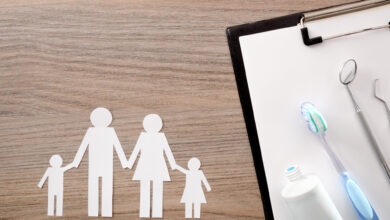Staying fit is one of the best things you can do to reduce your chance of getting chronic illnesses. Regular exercise also helps protect your heart, support a healthy weight, and improve your mood.
Some muscle soreness after a workout is inevitable, but how do you overcome it to enjoy your activity?
The tips below can help you get more out of your next workout, even if you’re feeling some soreness.
Rest and Recovery
After an intense workout, muscles become fatigued, leading to soreness and discomfort. To ensure your body is ready for the next session, dedicate time for necessary rest and recovery. Restful activities can help promote healing.
Rest and Recovery are essential parts of any muscle-building exercise. After a workout, your body needs time to repair and rebuild, and this is necessary to avoid feeling the burn of muscle pain.
Taking the time to rest after exercise is essential. It ensures that you are allowing your muscles the time to heal and function optimally. Proper rest and recovery will ensure you stay motivated and active for each upcoming workout.
Gentle Stretching
Gentle stretching can be an effective way to ease muscle soreness after a workout. Stretching helps to reduce tension in the muscles and joints. It increases circulation and delivers nutrients to the affected muscle groups.
Gentle stretching can also increase flexibility and range of motion. It allows better mobility and future workouts. It can activate the parasympathetic nervous system, helping lower cortisol levels and leading to a calmer, more relaxed feeling.
Apply Heat
To help alleviate muscle soreness after a workout, applying heat can be very beneficial. Heat is known to increase blood flow to the area, which in turn helps to reduce inflammation which can lead to muscle soreness. Applying heat to the sore muscle area for 15-20 minutes can provide relief, as it relaxes muscles and increases the range of motion.
Heat can be applied in various forms, such as warm water, hot baths, hot showers, hot water bottles, heat packs, or even a hot compress. It should be applied gently and if at any point the heat begins to become uncomfortable, reduce the amount of heat or remove it completely.
Cold Therapy
Cold therapy is the most well-known method. This technique is highly beneficial as it decreases inflammation and enhances recovery. After a strenuous workout session, apply an ice pack, a wet towel filled with ice, or even an ice bath, to the affected muscles in order to reduce the pain and inflammation caused by lactic acid build-up and microtrauma.
Cold therapy is applied directly after a workout, as it helps reduce swelling and encourages blood flow to the sore area, which in turn helps the body to heal itself. It is also known to reduce pain, so if you’re feeling the burn after a workout, try applying physical cooling to reduce your muscle soreness and help heal your body faster.
Massage
Massage helps to increase circulation, stimulate the lymphatic system, and reduce muscle tension. Massage also helps to reduce inflammation and pain in the muscles, resulting in a quicker recovery time. This also helps to release endorphins, the body’s natural pain reliever.
A massage can help to improve the range of motion, reduce scar tissue, and increase flexibility. It is a great way to relax the body and promote healing, especially after intense exercise.
Stay Hydrated
Not only does drinking plenty of fluids ensure your muscles get the nutrients and energy they need, but water also helps flush out any lactic acid buildup. Drinking enough fluids before, during, and after a workout can help reduce muscle soreness, inflammation, and fatigue.
Investing in a reusable water bottle will remind you to drink plenty of fluids throughout the day, including during and after a workout. Pack a healthy snack and some water with you to the gym, and stay hydrated while you burn your way to better results!
Over-the-Counter Pain Relievers
Many of these products contain both nonsteroidal anti-inflammatory drugs (NSAIDs) as well as analgesics that provide anti-inflammatory and pain-relieving effects. As with any medication, it’s important to take the recommended dosage carefully, as excessive use can lead to unwanted side effects.
They should only be used as a supplement to other post-workout strategies and not as a replacement for proper stretching, rest, and nutrition. Many athletes incorporate an ice and heat therapy routine to help alleviate soreness. For more severe pain, seeing a healthcare professional is recommended.
Proper Nutrition
Eating a balanced diet with adequate protein and carbohydrates before and after exercise is essential for muscle growth, repair, and recovery from soreness. Adequate amounts of lean protein help repair muscles and fuel their growth. Carbs replenish glycogen stores and provide energy during a workout.
Consuming enough calories during exercise aids the body in repairing microtears in the muscles. This allows them to recover more efficiently. A balanced diet and the best recovery supplements are important.
Avoid Muscle Soreness after a Workout
Muscle soreness after a workout is inevitable. The key to avoiding extreme soreness is to follow the tips above. Properly treating your muscle soreness will help you feel better, recover faster, and make your next workout even better.
So don’t be afraid to feel the burn, just remember to treat your muscles the right way afterward.
Do you want to find more helpful info? Check out more of our guides on our blog today!




